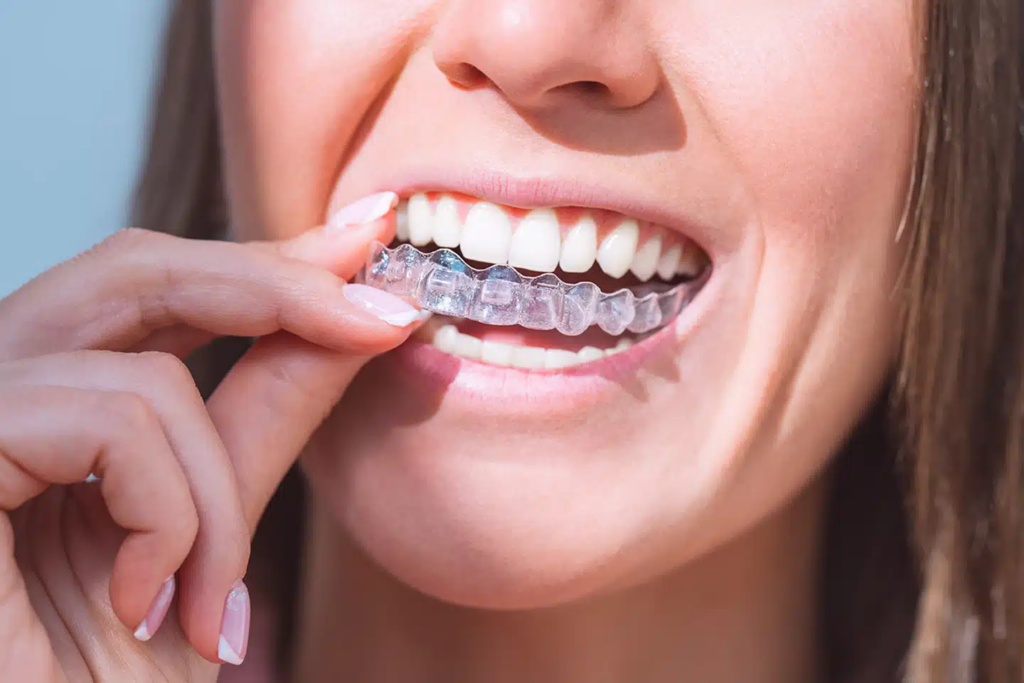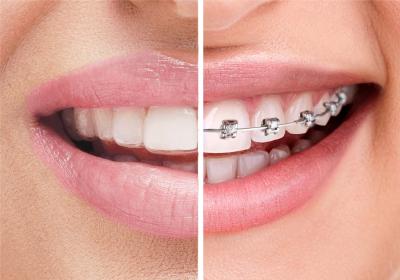If you’re looking to straighten your teeth, you have two main choices: braces and aligners. Both are widely used by orthodontists to fix misaligned teeth and enhance your smile. But they’re not the same and come with their pros and cons.
In this article, we’ll dive into the benefits and downsides of braces vs aligners, helping you decide which option is best for you. Let’s make your smile shine!
Pros of Braces
When comparing braces vs aligners, it’s important to note that braces are a common method to straighten teeth. They are made of metal or ceramic brackets attached to the teeth.
Wires connect these brackets and apply pressure to slowly move the teeth into the right position. Here are some of traditional braces benefits:

Effective for Complex Cases
Braces are a proven solution for tough teeth misalignments. If your teeth are crowded, crooked, or gapped, braces can help correct them.
Unlike removable aligners, braces stay in place during treatment, continuously moving your teeth without breaks.
Affordable Option
Braces are typically more affordable than aligners, which can be costly. They often provide various payment plans, making it easier to manage expenses.
Cons of Braces
As with any dental treatment, braces also have their downsides. Some of the cons include:
Discomfort and Irritation
Braces use brackets and wires that can be uncomfortable and cause irritation, especially in the first few weeks, as your mouth adjusts to them.

Visible Appearance
Braces are noticeable due to their metal or ceramic brackets and wires, which can make some people feel self-conscious and affect their confidence.
Dietary Restrictions
Certain foods can damage braces or get stuck in them, requiring more adjustments. Many orthodontists recommend avoiding hard, sticky, or chewy foods while wearing braces.
Pros of Aligners
As an alternative to braces, aligners are rather popular. These are transparent plastic trays that fit over your teeth and gradually move them into the proper alignment. Here are a few obvious benefits of aligners:
Removable and Invisible
Aligners are easy to remove for eating, drinking, or brushing your teeth, making them more convenient than braces. They’re nearly invisible, making them a great choice for anyone seeking a discreet option. Read more about Invisalign here to ensure you know everything before making your decision.
Comfortable
Aligners differ from braces. Made of smooth plastic, they feel more comfortable in your mouth and lack wires or brackets that can irritate your cheeks and gums.

No Dietary Restrictions
Since aligners are removable, you won’t have to worry about food getting stuck or damaging them, allowing you to enjoy all types of food without restrictions.
Cons of Aligners
While aligners offer many advantages, they also come with some downsides, such as:
Compliance
Since aligners are removable, success is heavily dependent on patient adherence. If patients don’t wear them as directed (usually 20-22 hours a day), treatment can be delayed.
Not Suitable for All Cases
Aligners may not be effective for more severe orthodontic issues that require precise adjustments.
Cost
Depending on the provider and treatment duration, clear aligners can be more expensive than traditional braces.

Braces vs Aligners: Choose the Right One For You
Braces and aligners each have their good and bad points. Braces vs aligners? The right choice for you will depend on what you need and like best. Talk to an orthodontist to find out which is better for you. Soon, you’ll have a straight smile! Don’t forget to take care of your teeth during treatment for the best results. Keep smiling!
Is this article helpful? Keep reading our blog for more.







